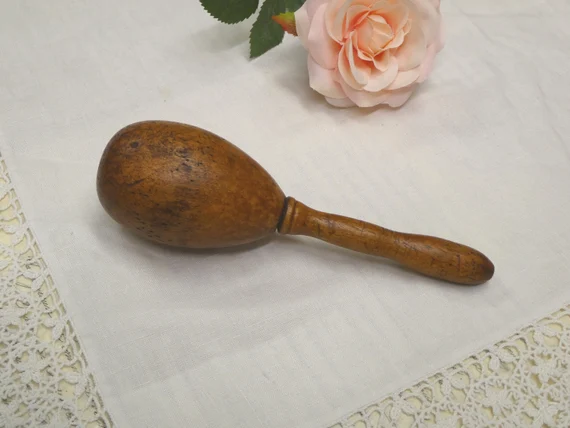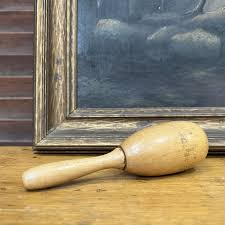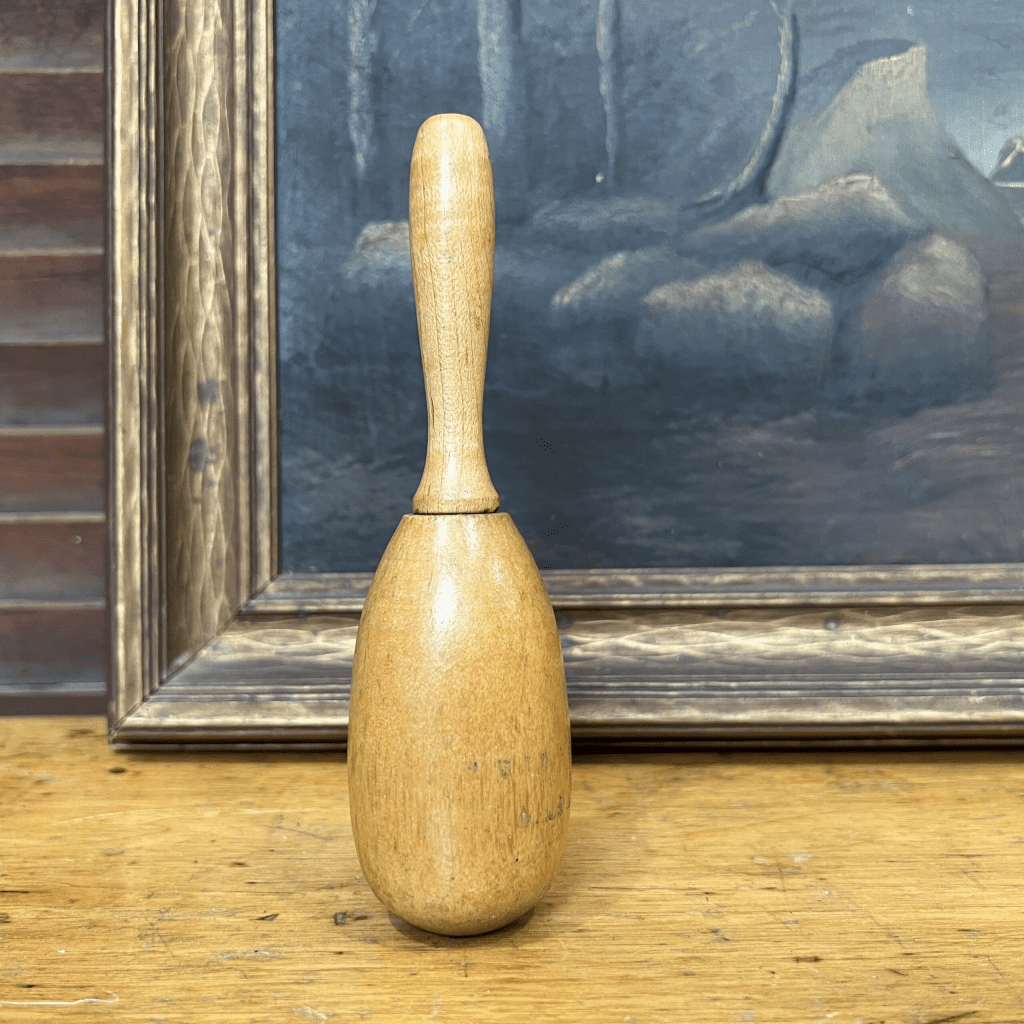If you’ve ever stumbled across a vintage wooden sock darning tool, you might have wondered about its purpose. This humble object, often shaped like an egg or mushroom, once played an essential role in households around the world. Today, it serves as a nostalgic reminder of a time when repairing and reusing were everyday practices. Let’s dive into the story of this ingenious tool and why it remains fascinating to this day.

What Is a Wooden Sock Darning Tool?
A sock darning tool is a handheld wooden implement, typically crafted to provide a smooth surface for repairing fabric. These tools were most commonly used for fixing holes in socks—a skill once deemed vital in every household. Shaped like an egg or mushroom for ergonomic ease, the tool allowed fabric to be stretched and stabilized while a needle and thread worked their magic.
In a world before fast fashion, socks were not disposable. Instead of tossing them away at the first sign of wear, families took pride in extending the life of their garments. The darning tool, simple yet effective, made this task infinitely easier.
How Did It Work?
Using the darning tool was straightforward yet surprisingly ingenious. You’d place the wooden egg or mushroom inside the sock, positioning it beneath the hole that needed repairing. This provided a sturdy surface, making it easier to sew without accidentally stitching the layers of the sock together.
The process involved weaving thread across the damaged area to create a durable patch. Think of it like bridging a gap—the threads would crisscross to reinforce the fabric. The rounded shape of the tool ensured that the repair maintained the natural contour of the sock.

The Era of Practicality and Sustainability
The wooden sock darning tool hails from an era when practicality was king. In the mid-20th century and earlier, people valued resourcefulness over convenience. Socks, like most clothing, were seen as investments, and discarding them due to a small tear was considered wasteful. Families passed down the art of darning from generation to generation, turning the chore into a shared tradition.
Back then, life wasn’t about having more—it was about making the most of what you had. This ethos resonates today as people increasingly embrace sustainability and conscious consumption.
Why the Wooden Darning Tool Was Ingenious
The brilliance of the darning tool lies in its simplicity. Crafted from durable wood, it was built to last for years, if not decades. Its smooth surface prevented snags, while its compact size made it easy to store in sewing kits or drawers.

The ergonomic design wasn’t just functional—it also spoke to the craftsmanship of the era. Many vintage darning tools feature intricate carvings or polished finishes, showing that even utilitarian objects were crafted with care and aesthetic appeal.
A Symbol of Nostalgia and Craftsmanship
For many, the wooden sock darning tool represents a bygone era—a time when people took pride in their handiwork and valued the longevity of their possessions. Today, these tools are cherished by collectors, sewing enthusiasts, and those who appreciate vintage charm.
Have you ever come across one at an estate sale, in your grandmother’s sewing box, or even tucked away in your attic? It’s worth taking a closer look. Not only is it a functional tool for those interested in mending, but it’s also a tangible piece of history.
The Rise of Mending Culture in Modern Times
In recent years, mending has experienced a resurgence. As people grow more aware of environmental issues and the impact of fast fashion, repairing clothes has become a statement of sustainability. The vintage wooden sock darning tool fits perfectly into this movement, offering a hands-on way to embrace the “reduce, reuse, recycle” mantra.
You don’t need to be an expert seamstress to use one, either. Darning is a beginner-friendly skill that requires minimal supplies—just a needle, thread, and a bit of patience. With online tutorials and community workshops, learning this age-old craft has never been easier.
Where to Find Vintage Darning Tools Today
If you’re intrigued by the idea of owning a vintage wooden sock darning tool, you’re in luck. These treasures often turn up in antique stores, flea markets, and online marketplaces. Look for ones with a smooth finish and minimal damage—these will be the easiest to work with.
Collectors should keep an eye out for rare designs or those featuring unique carvings. Some darning tools were even painted or decorated, making them both functional and beautiful.

A Timeless Reminder of Ingenuity
The wooden sock darning tool is more than just a relic—it’s a testament to human ingenuity and the timeless value of making do with what you have. Its story reminds us of a time when resourcefulness was a way of life, and even the smallest tasks were approached with care and creativity.
So, the next time you see one, take a moment to appreciate its history. Who knows? It might just inspire you to pick up a needle and thread and give your worn-out socks a second chance at life.
Conclusion
The vintage wooden sock darning tool embodies practicality, craftsmanship, and sustainability. It’s a piece of history that highlights how something as simple as repairing a sock can reflect larger values of resourcefulness and care. Whether you’re a collector, a sewing enthusiast, or someone seeking a sustainable lifestyle, this clever tool is a reminder that even the most unassuming objects can have a profound story to tell. Who knew such a small item could carry so much history?